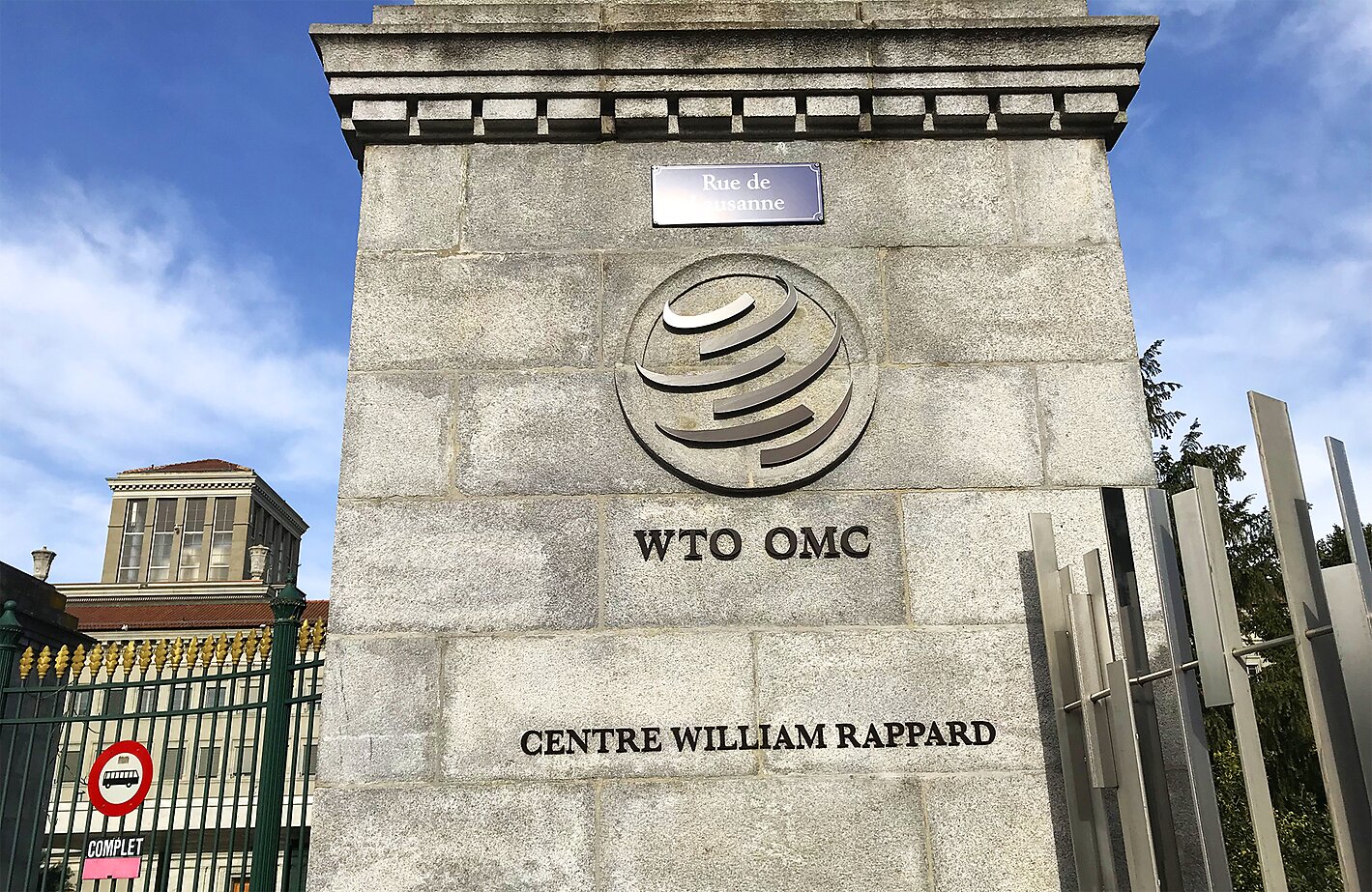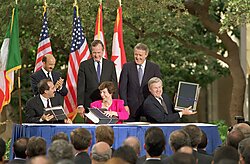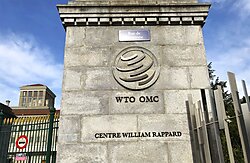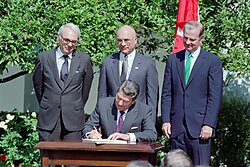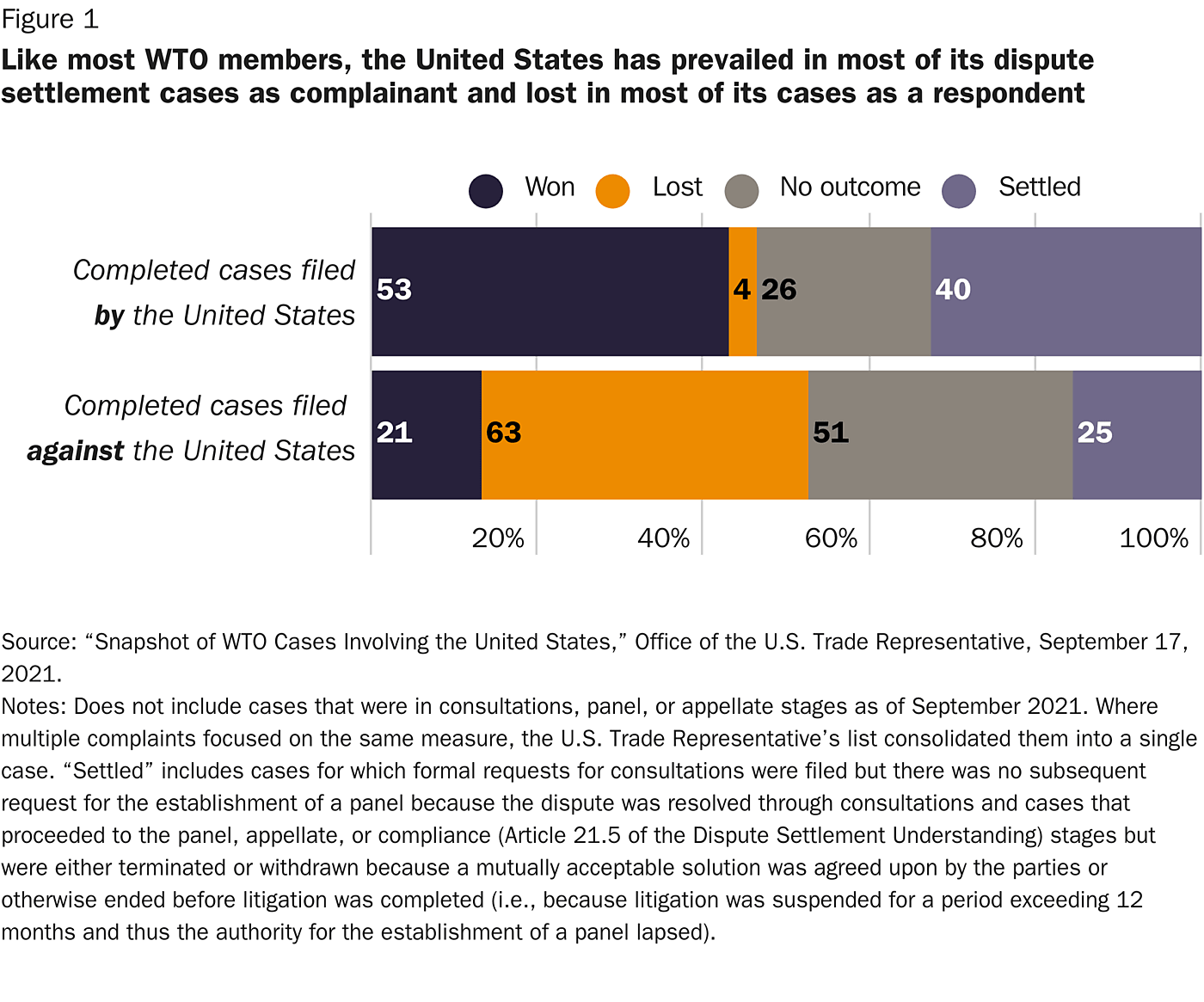There is nothing in the WTO agreements that requires countries to lower their tariffs and other trade barriers unless they have freely chosen and agreed to do so. Members can decide to lower or eliminate tariffs and other obstacles to trade, or they can decide to keep them. The WTO has long been a multilateral means for achieving freer trade; but this has been because WTO members have long wanted it to serve that purpose. The WTO agreement leaves it to individual countries to set their own trade and other economic policies. As the WTO website explains, “The WTO’s founding Marrakesh Agreement recognizes that trade should be conducted with a view to raising standards of living, ensuring full employment, increasing real income and expanding global trade in goods and services while allowing for the optimal use of the world’s resources.” Very often, achieving this goal means freeing trade; but, in many cases, it can also mean erecting tariffs and other barriers against unfair trade where there is dumping by private companies (basically, selling in the target market at below the cost of production in the home market, with injurious results) or subsidies to private companies or industries by governments that cause injury by distorting the marketplace.
There also is nothing in the WTO agreements that requires the implementation of a worldwide “neoliberal” agenda to eliminate government regulations and social safety nets in service of “free market fundamentalism.” Critics of the WTO talk much about the need for “policy space” reserved for domestic law beyond the reach of international economic rules and often fear that the WTO will overrule local regulations that exceed global standards or promote vital, noncommercial societal values. They warn of tainted “Frankenfoods,” toxic products, diminished labor protections, shrinking public services, and a litany of other public health, safety, and environmental risks.
None of this is true. In fact, the WTO agreements are replete with provisions that assume there will be domestic health, safety, environmental, and other regulations and allow considerably more local policy space than many WTO critics admit. The rules do not address whether national measures—domestic laws, regulations, and practices—are imposed or their stringency but rather how they affect trade. If a measure does not affect trade, then WTO rules are not relevant. If the measure does affect trade, it will be consistent with WTO rules if it provides an equal competitive opportunity in the domestic marketplace for all like foreign and domestic products. Rules on trade in goods generally implicate the sovereign “right to regulate” only where the measure at issue discriminates between and among like traded products, either in favor of domestic over foreign products or in favor of some foreign products over others. Much the same is true in the reservation of policy space under the WTO rules on trade in services.
Similarly, WTO rules require members to protect intellectual property rights but grant considerable latitude to provide such protection “in a manner conducive to social and economic welfare” and “to promote the public interest” through domestic measures that “protect public health and nutrition” and promote “socio-economic and technological development.” Also, WTO rules on technical regulations generally limit local regulations only if they discriminate between and among like traded products, or if they create unnecessary obstacles to international trade or are more trade-restrictive than necessary to fulfill a legitimate objective. Rules on “sanitary and phytosanitary” measures permit members to implement measures necessary for the protection of human, animal, or plant life or health, subject to similar conditions and ones regarding the regulations’ scientific basis and the sufficiency of the scientific evidence supporting them.
Given these realities, WTO rules have unsurprisingly not encouraged members to engage in a regulatory “race to the bottom” to attract multinational investment or boost domestic firms’ international competitiveness. In fact, economists have mostly concluded that international trade generally benefits the environment by boosting economic growth, productivity, and innovation and by generating new tax revenues for environmental protection. As economist Jagdish Bhagwati has said, “Efficient policies, such as freer trade, should generally help the environment, not hurt it,” and empirical evidence shows that—over the long term—rising national income results in rising environmental protection.” (Economists call this the “Environmental Kuznets Curve.”) Bhagwati has added, “Eventually environmental degradation peaks. It then begins a steep descent as economy and incomes continue to grow.” There also is “little evidence that polluting industries relocate to jurisdictions with lower environmental standards in order to reduce compliance costs.” The empirical research thus far, as distilled in a study done for the World Bank, “has found little or no evidence that pollution intensive industry is systematically migrating to jurisdictions with weak environmental policy; hence maintaining a weak environmental policy regime appears to have little effect on a country’s comparative advantage. Other factors such as labor productivity, capital abundance, and proximity to markets are much more important in determining firm location and output.” (The World Bank does note that there is more evidence thus far from developed than from developing countries.)
A similar conclusion can be drawn for labor standards over the long term. As American political scientist Daniel Drezner has explained, “There is no indication that the reduction of controls on trade and capital flows has forced a generalized downgrading in labor or environmental conditions. If anything, the opposite has occurred.”
